While Provençal food is unquestionably French cuisine, it’s also rooted in its own southern geography and distinct culture. The food of Provence, like the cuisine found across the eastern border into Italy, benefits from its sun-soaked aspect. The result? Bountiful, flavorsome produce that is the pride of Provence’s kitchens.
Flavor is in the air here. While visiting the serene stone villages of Provence you’ll smell herbs such as thyme, rosemary, and, of course, lavender in the air. In fact “Herbes de Provence” is such a successful combination of flavors that it’s sold as such. These flavors dominate in Provençal dishes although, with ancient trade ports like Marseilles, other exotic flavors have been assimilated into the food culture.
Provençal food is where France meets the Mediterranean. Pour yourself a glass of chilled rosé wine while you peruse this mouthwatering list of Provençal dishes to try.
Ratatouille
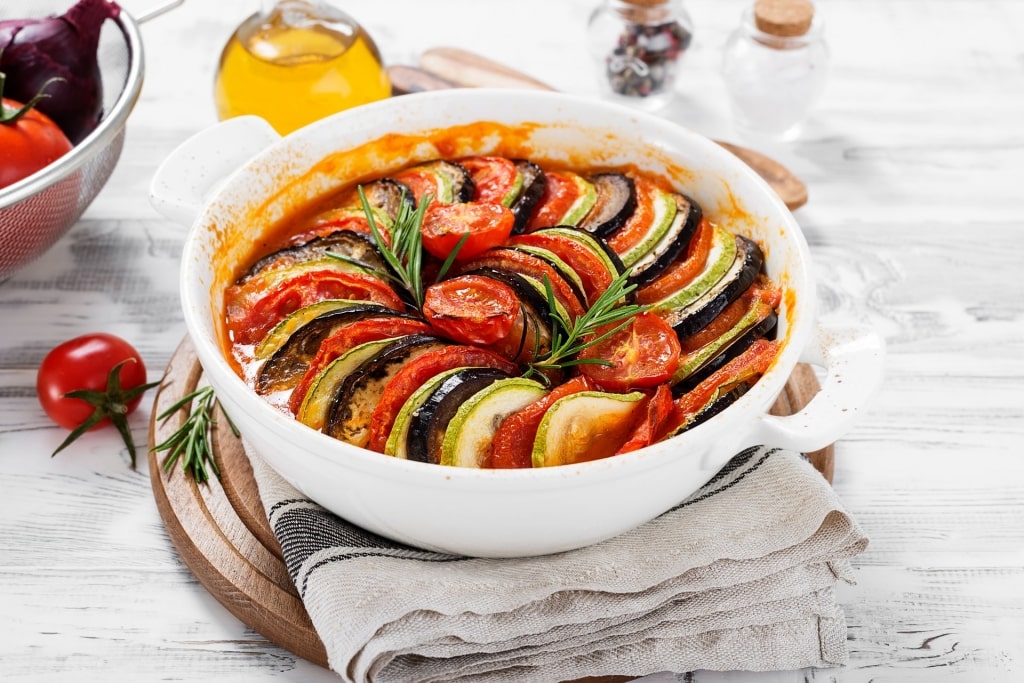
Ratatouille
An icon of Provençal food, this colorful 18th-century stew was created by farmers as a way of using up their annual harvest of summer vegetables. The rather musical name derives from the Occitan, the medieval language of the region, for “Rataolha”, roughly translated as “tossed chunky stew”. Thus proving that everything sounds better said in French.
An expression of the region’s notable flavors, expect your bowl of steaming ratatouille to include courgette, eggplant, tomato, onion, and capsicum pepper, their flavors united by garlic and Herbes de Provence. To maintain the magnificent flavors of Provence-grown produce, it’s recommended that the vegetables are cooked separately before being thrown together, in order to preserve their individuality.
Of course, this kind of culinary dedication to the integrity of your bowl of ratatouille is not found everywhere. While visiting Provence, ask for recommendations from locals who will point you in the direction of their favorite bistro, or possibly launch into a passionate diatribe about the “true” method of ratatouille production.
Otherwise, book a table at the highly respected Lou Balico in Nice, where it’s offered as part of a heavenly tasting menu of Provençal food.
Aïoli
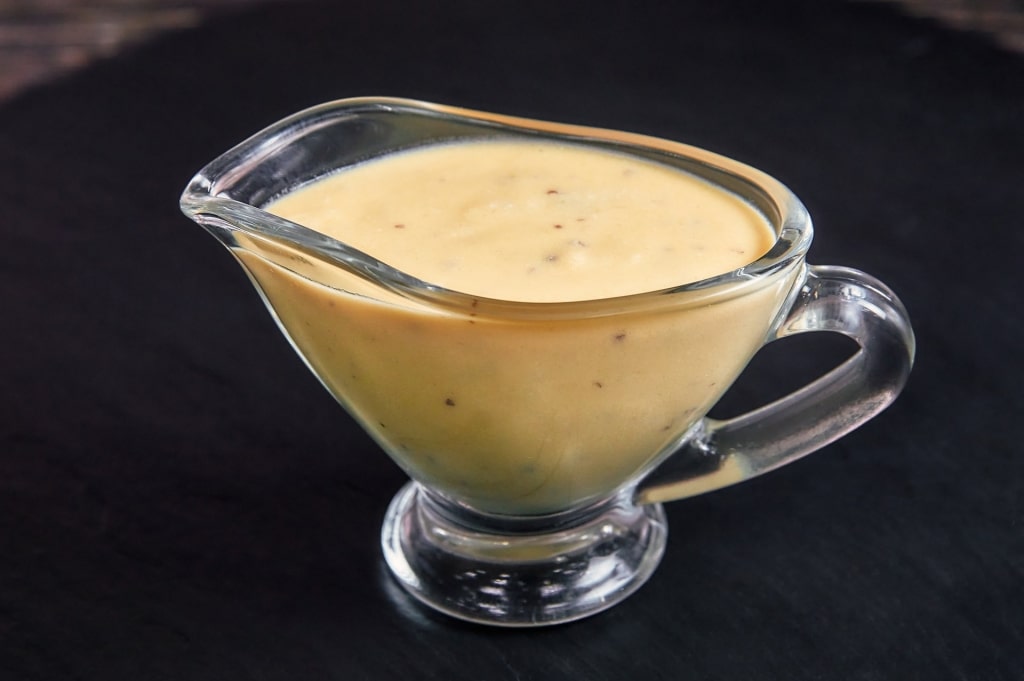
Aïoli
Aïoli is such an intrinsic part of Provençal culture that it used to be the title of a 19th-century newspaper in the region.
A thick garlic sauce made with oil, aïoli is believed to be of Roman origin. Its prevalence throughout the Mediterranean, with versions found in Spain, Italy, and Malta, adds credence to this origin story.
In Provence, you’re likely to find it served alongside seafood dishes, its unctuous, garlicky nature a perfect foil for the freshness of fish. The dip takes center stage when served as part of Le Grand Aïoli.
A feast day favorite, Le Grand Aïoli is a smorgasbord of pairing items such as boiled artichoke, soaked salt cod, and tuna (and at Christmas, snails) served up for a festival of sharing, with the centerpiece aïoli.
Bouillabaisse
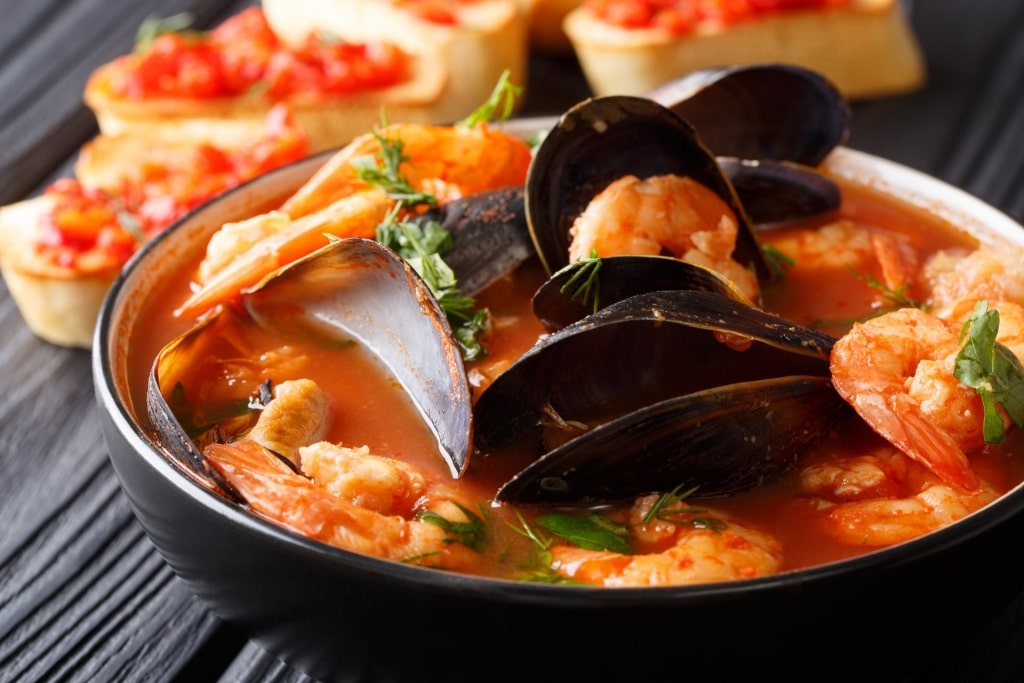
Bouillabaisse
A dish that’s deeply Marseillaise, with a provenance dating back to the very founding of the city, Bouillabaisse is an essential element of Provençal cuisine.
It’s also a huge amount of food. Typically served for a group of five to share, Bouillabaisse involves a medley of fish such as gurnard, conger eel, and red rascasse. Alongside the meat is a saffron-infused broth on which rounds of spicy, mayonnaise-slathered baguette slowly take on savory stock.
If the fish varieties sound a little niche, it’s because they represent the part of the catch that Marseille’s fishermen of yore used to have difficulty selling on. Bouillabaisse acted as the solution to that problem, with those unwanted fish now the stars of dining rooms throughout Marseille.
If you’re in the city, three-Michelin-starred Le Petit Nice is the place to try to get a reservation. For something that feels a little closer to the humble fishing origins of this iconic dish, try Chez Fonfon in the atmospheric cove of Vallon des Auffes.
Tapenade
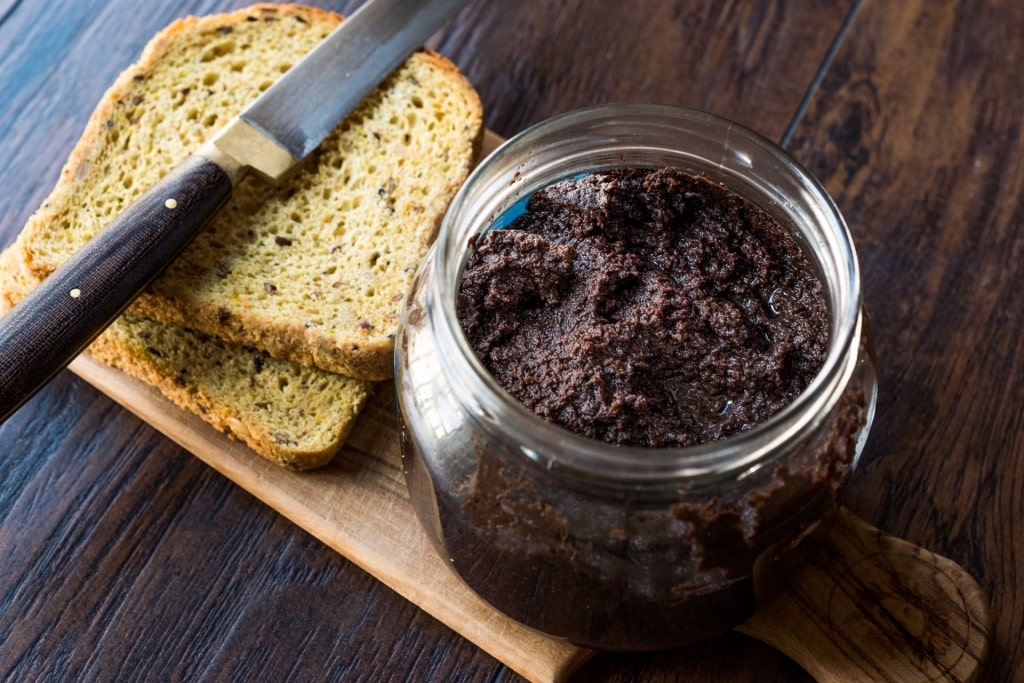
Tapenade
With one taste, tapenade, a jet-black spread of olives, capers, anchovies, garlic, and Herbes de Provence, has the power to transport you to the edge of a Marseillaise dockside, the sun shining on the Vieux Port with the mews of the gulls carried on the breeze.
While tapenade was ostensibly “invented” in Marseille in 1880, there are similar foods found in Catalan and Greek cultures. And, oddly for an overwhelmingly olive-based dip, this aperitif-mainstay is named for the Provençal term for capers. This is generally ascribed as a hangover from an earlier, caper-only tapenade created when caper buds stored in amphorae became mushed together.
Coastal in character and therefore a perfect pairing for seafood, it’s also wonderful just as a spread on slices of baguette while sipping a cool glass of aniseed pastis at a bar with sea views.
Salade Niçoise
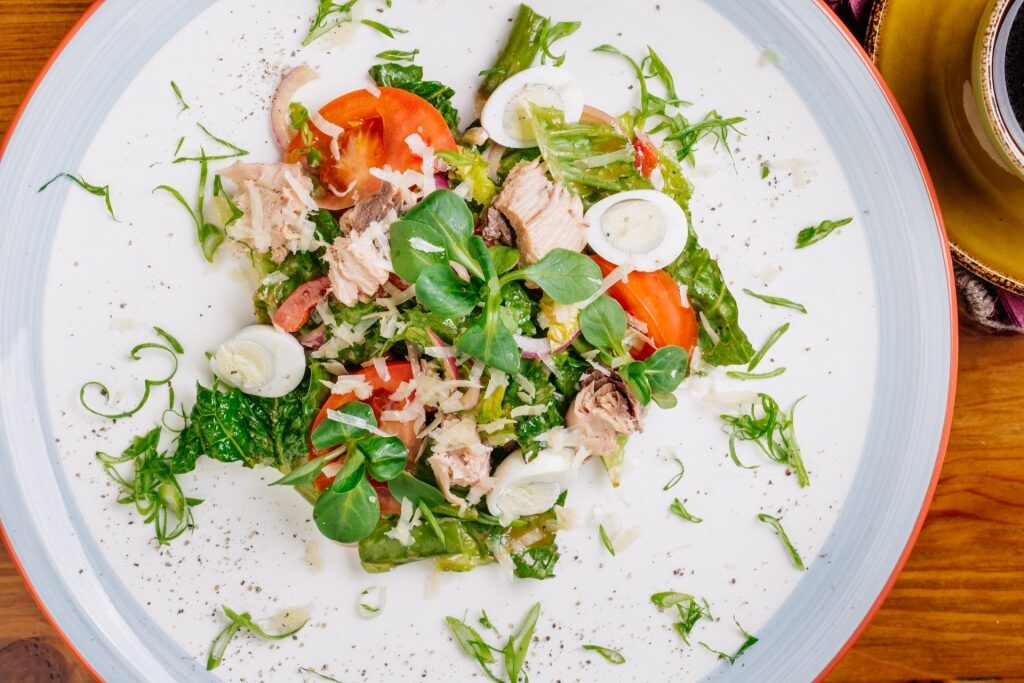
Salade Niçoise
Perhaps of all Provence dishes, salade niçoise and the composition of its deliciously contrasting ingredients has, through its history, caused a great deal of upset amid the flower baskets and winding lanes of this southern region.
Born of the summery city of Nice, hence the name, the modern version of this salad is based on a stripped-down, 19th-century peasant dish involving an arrangement of tomatoes, anchovies, and olive oil on a plate. On top of these Mediterranean essentials was piled tuna, hard-boiled eggs, potatoes, olives, green beans, and, lo, a classic was born.
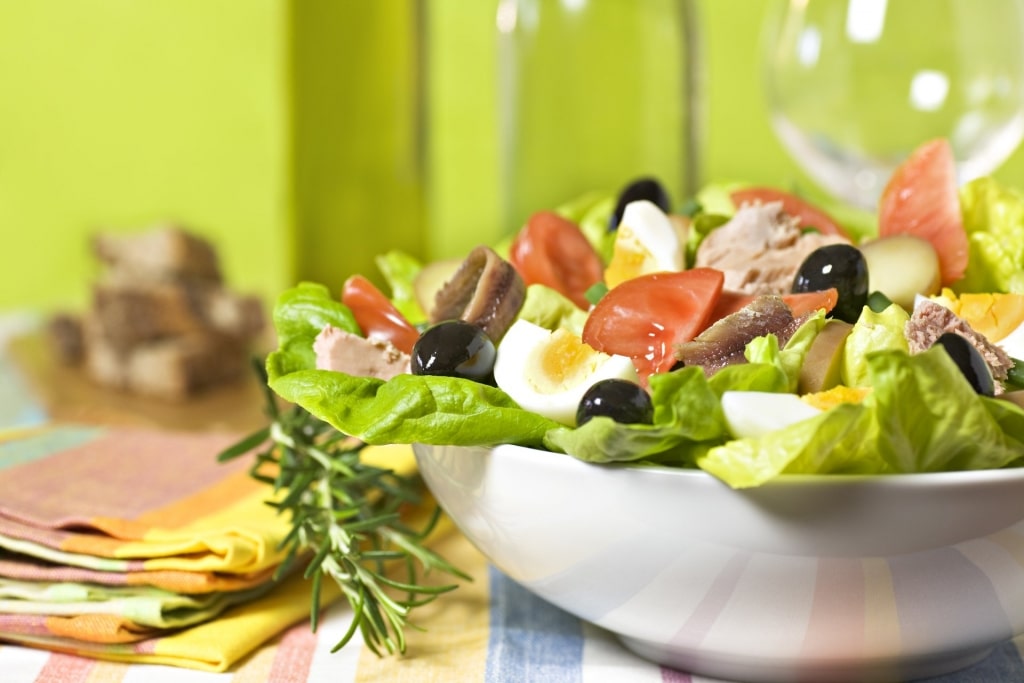
Salade Niçoise
And, it seemed, everybody had an opinion on how it should remain a classic. “Keep the veg raw and fresh so that the flavor of the Provençal sun and the richness of its land can be tasted in every forkful.” “Use only tinned tuna, never fresh.” The debate rumbles on.
Far from the madding crowd, perhaps on the sun-warmed rooftop of a French Riviera restaurant, you’ll be served a Salade Niçoise. However it comes, it’ll be magnificent, the sea and the land and all the tangy-umami flavors in between distilled into one simple salad bowl.
Nougat
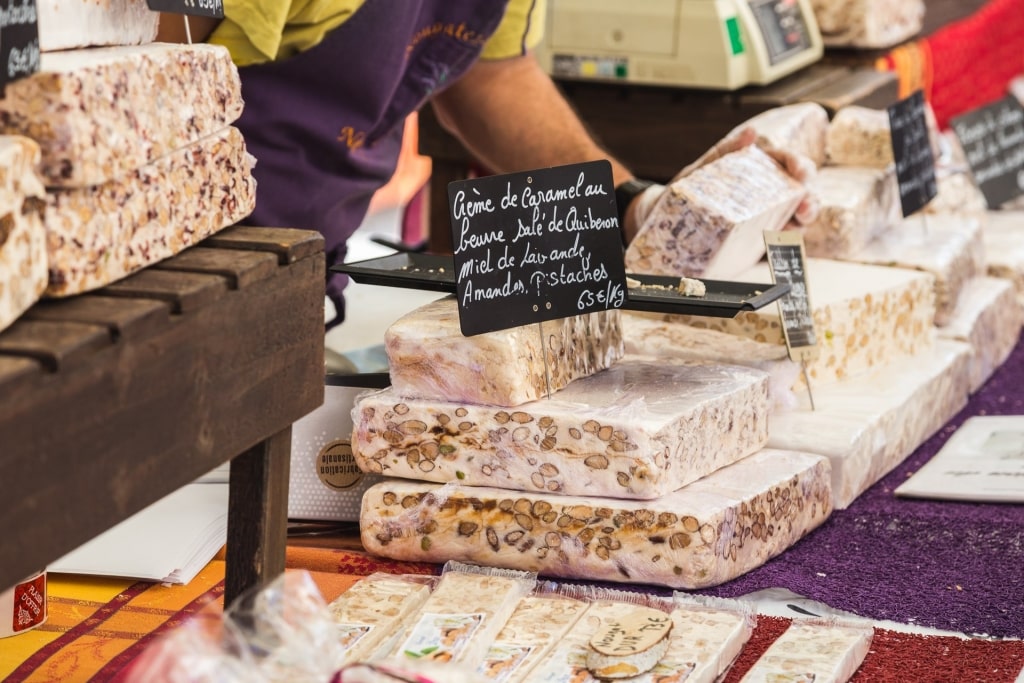
Nougat
There’s nougat, and then there’s softly chewy south of France nougat, white as a wisp of cloud on the horizon of the Côte d’Azur and embedded with roasted pistachios and almonds.
The proper name for Provence’s finest nougat is Montélimar, made in the eponymous town, where there’s even a nougat museum for the fanatical. While the ancient origins of nougat lie in the Middle East, medieval agronomist Olivier de Serres receives the credit for his planting of almond trees that, along with the honey historically farmed in the region, helped create this Provençal tradition.
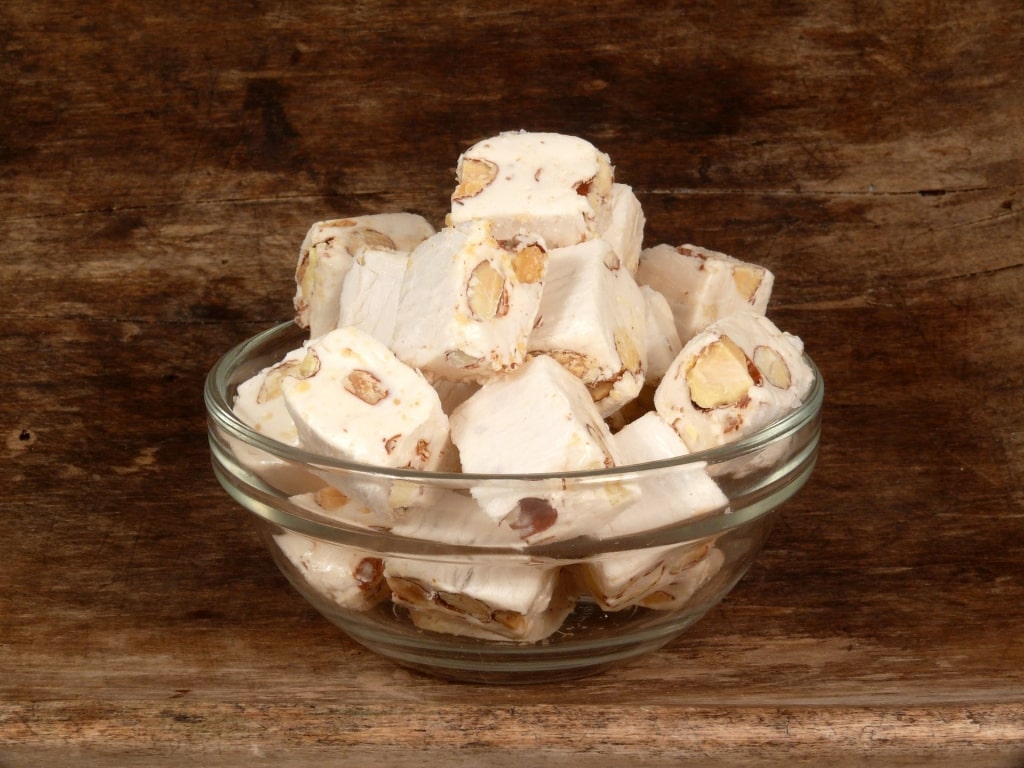
Montélimar nougat
What really rocketed Montélimar nougat into the global consciousness, however, was when the town’s former mayor, Emile Loubet, became President of France. During his seven-year tenure in the highest office of the land, he liberally shared around the nougat to other heads of state, royalty, and pretty much anyone else who crossed his path. Word spread, and Montélimar’s nougatiers suddenly found themselves extremely busy.
Today, Montélimar nougat is another Provençal food with a PGI certification guarding its heritage. These delicious, chewy blocks of sugar, lavender, honey, egg white, vanilla, almonds, and pistachios are also one of Provence’s 13 traditional desserts served at Christmas.
Daube de Boeuf
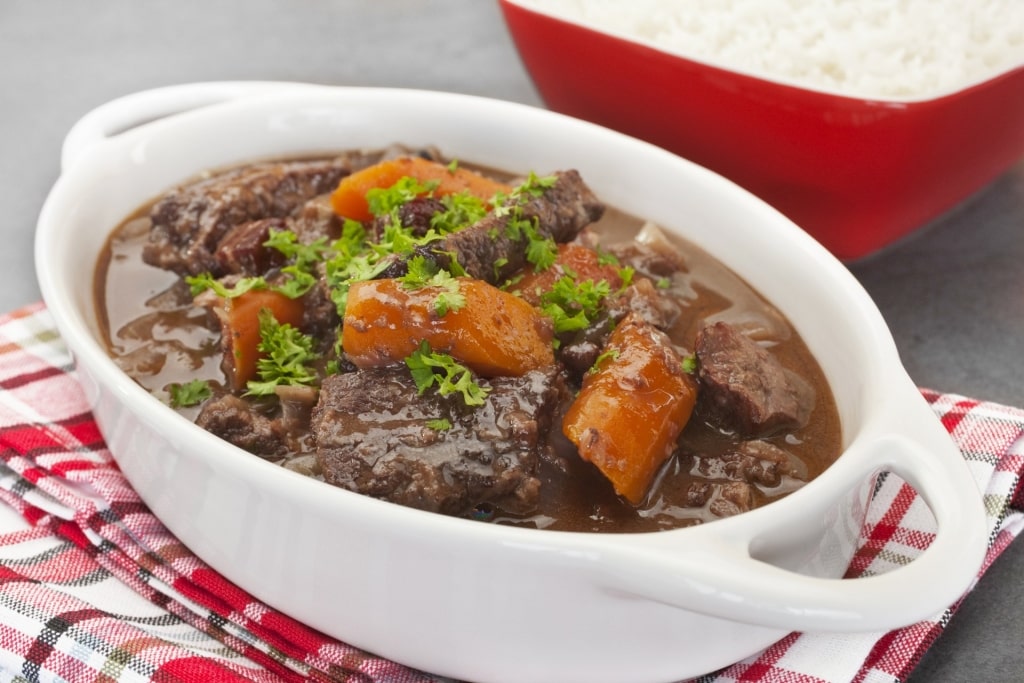
Daube de Boeuf
Daube de Boeuf is a simple beef stew, elevated to greatness by French culinary ingenuity. A working-class dish favored by those transporting goods along the bumpy roads and crowded canalways of 19th-century Provence, Daube was a warming, calorie-replenishing repast.
Marinated in wine overnight, the beef was then simmered with black olives, smoked pork belly, carrots, tomatoes, and garlic with a seasoning of thyme, savory, and laurel. Daube’s secret ingredient, and what raises it up, is the ingenious addition of some dried orange peel.
Rich, hearty, and complex, this pot of beef stew also represented for many of these workers the only meat that they would eat during the normal course of their lives. What made it affordable was the less tender cuts used in the stew’s production, improved by the marinade and a long, slow cook.
Socca
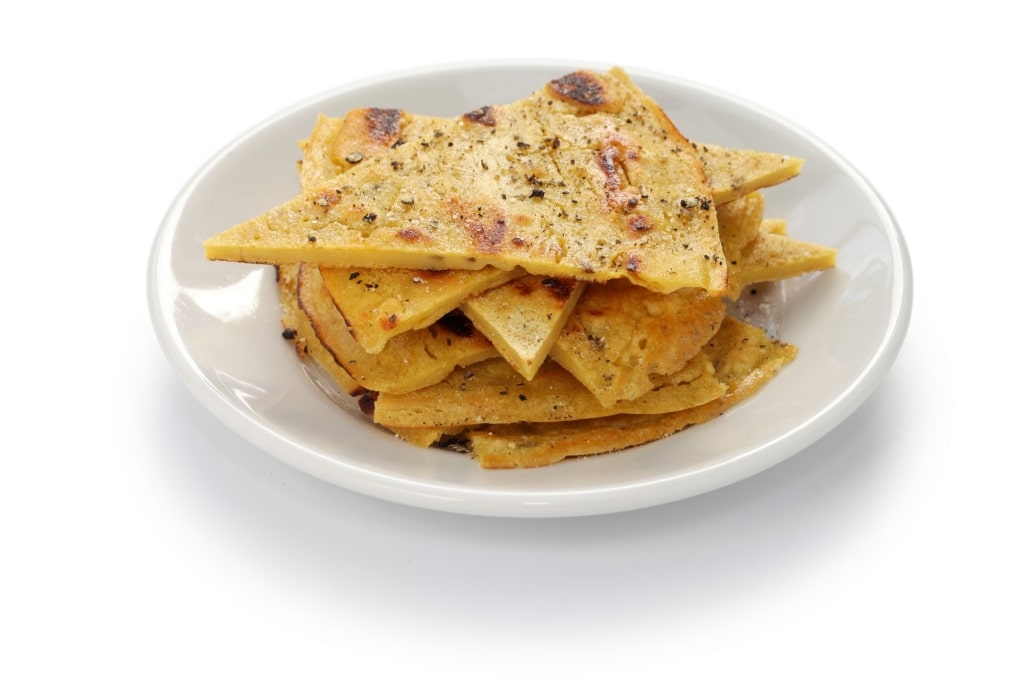
Socca
Wandering Nice’s palm-shaded Promenade des Anglais, the warm breeze might suddenly bring to you an aromatic whiff of warm garbanzo bean. Follow your nose and you’ll come to a stall, often with the owner calling “Socca, socca” to the gathering crowd.
The process at socca’s heart is a simple one. On a wide copper disc, a batter of garbanzo bean flour, olive oil, water, and salt is poured out and crisped to a caramel-colored perfection. When it’s ready, the crust is swiftly sliced through, its pieces are drizzled in olive oil and rock salt.
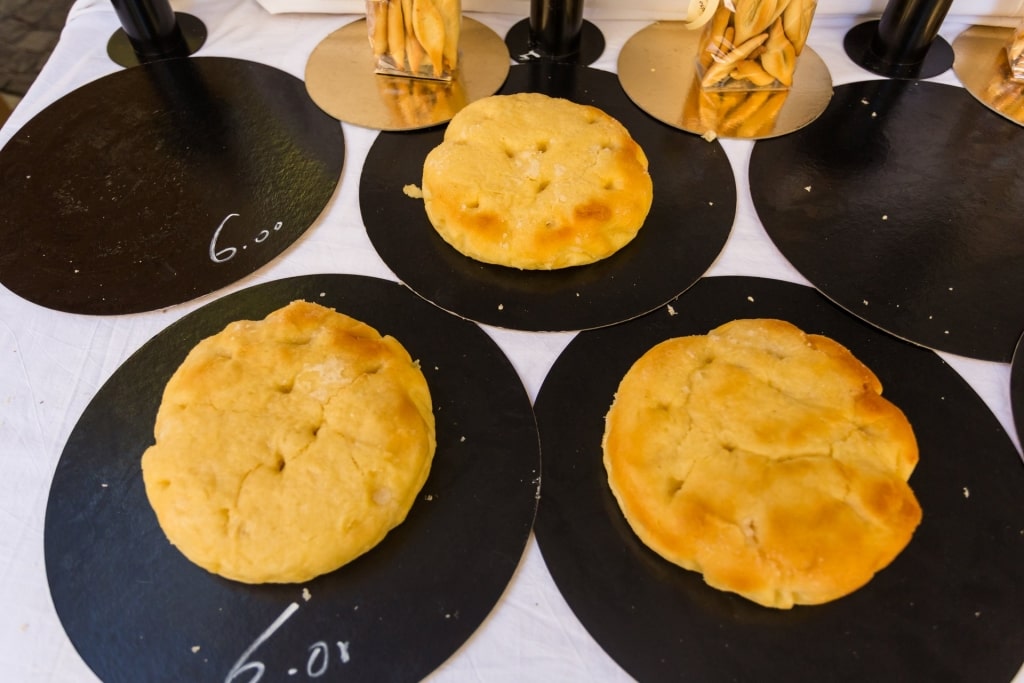
Socca
It’s the peculiarly wide pan that gives credence to the story that socca was originally cooked by Roman legionnaires who used their shields as a portable griddle. However it came about, versions of this street food favorite can be found throughout the Mediterranean. In fact, the people of Provence liked it so much they invented it twice, with the Marseillaise version, panisse, cooked just a little thicker.
In Nice, try it beneath the striped-blue awnings of Chez Thérésa in the city center, and be there before midday to avoid disappointment. Good panisse is found in many of the bars lining the Vieux Port, with sun-trap terraces offering views over the nautical coming-and-goings.
Tarte Tropézienne
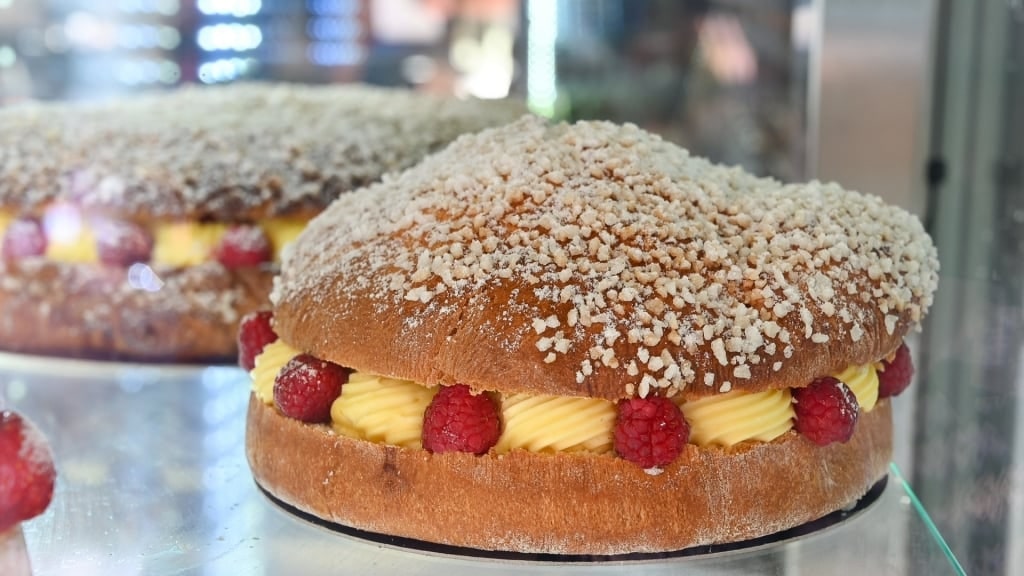
Tarte Tropézienne
A cream dream that blends the sumptuous excess of the French Riviera with the glamor of the silver screen, the Tarte Tropézienne is a sugar-loaded hit of pure Côte d’Azur.
When the Polish baker Alexandre Micka relocated to Saint Tropez in the 1950s, he, according to legend, created a cream-filled brioche treat apparently inspired by Grandma Micka’s secret recipe.
Enter up-and-coming actress, Brigitte Bardot. While filming on the Riviera, the soon-to-be-superstar tasted this bun and suggested, so dazzling was its marriage of buttery bread with vanilla and lemon cream, that Micka had to name it after the equally exquisite St. Tropez.
Micka obliged, and both brioche treat and French actress ascended to celebrity status not long after. Micka’s empire, where you can eat the original Tarte Tropézienne, now spreads across the south of his adopted country. Only there can you find the authentic sugar-studded Tarte Tropézienne, although versions of this classic are found in other patisseries.
Candied Fruits
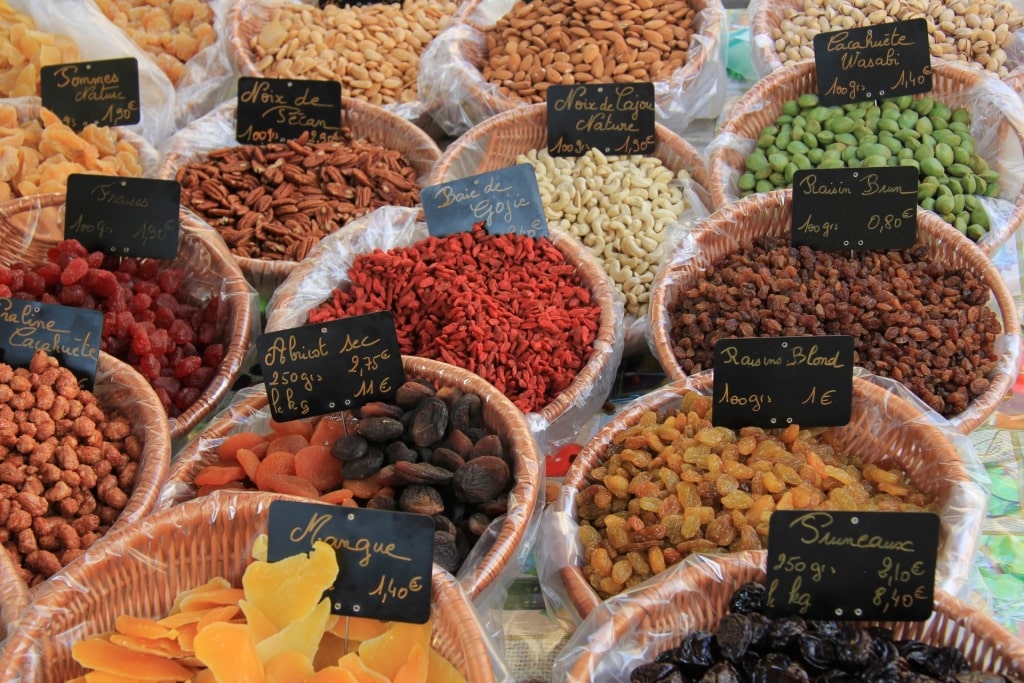
Candied fruits
A literally sugar-loaded innovation of Provençal food culture, candied fruit in the south of France is not to be confused with common fruit-shaped jellies. With this Provençal treat, pieces of actual fruit undergo a traditional technique that transforms them into long-lasting desserts. And it’s not just smaller fruit; in the shop windows of artisan candy producers, you’ll sometimes see entire glazed melons shining with an inner sugary light.
The original idea for preserving Provence’s natural bounty is credited to none other than astrologer-seer Nostradamus, a native of Saint Rémy-de-Provence. In the technique, still practiced in the same way today, the fruit’s juices are slowly replaced with concentrated sugar syrup. This process is then repeated up to 15 times until it’s complete.
Candied fruits take pride of place decorating one of the most iconic of Provence’s dishes in the Twelfth Night Cake or “Brioche des Rois”. Elsewhere in France, the Twelfth Night Cake is a marzipan tart, a confection spurned by the southerners as too “Parisian”. Seek out fifth-generation artisan producer Lilamand in Saint Remy-de-Provence, famous for his whole candied pineapples, or Bechard in Aix-en-Provence.
Rosé Wine
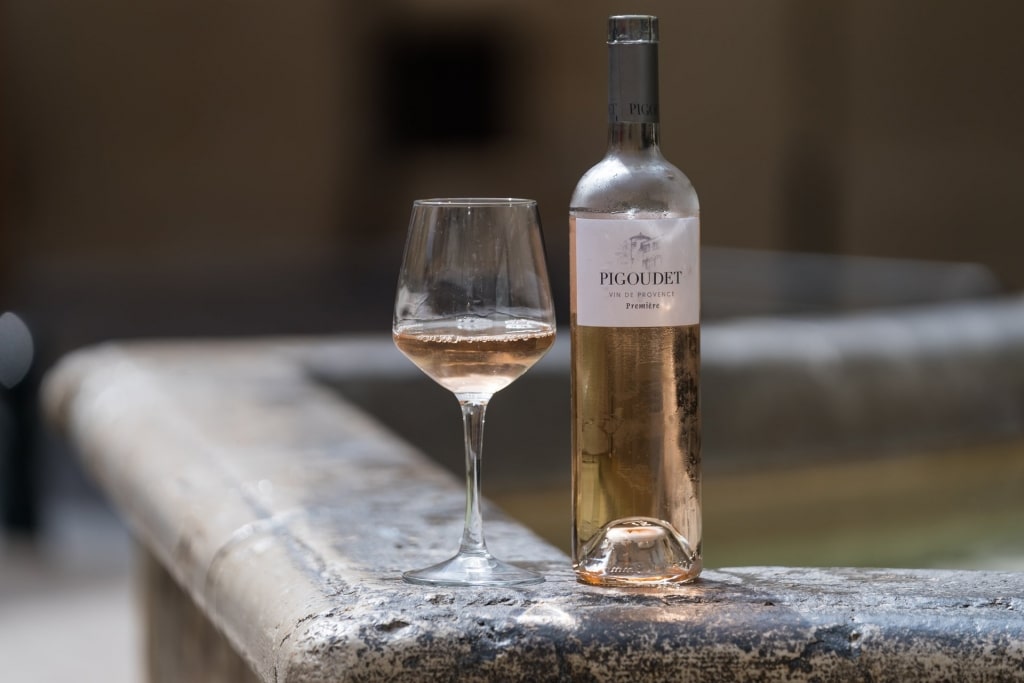
Rosé wine
Rosé wine is a symbol of Provence. This chilled, often light-bodied tipple, typically made from a blend of Grenache, Cinsault, and Mourvedre grapes is a perfect partner with seafood and many of the salty, olive oil-dressed snacks of the region.
The history of Provençal rosé harks back to the arrival of the Ancient Greeks in 600 BC on the piece of picturesque coast that would eventually grow into Marseille. The Greek style of wine was a blend of white and red grapes that was then diluted; a style that was to be later adopted by the Romans.
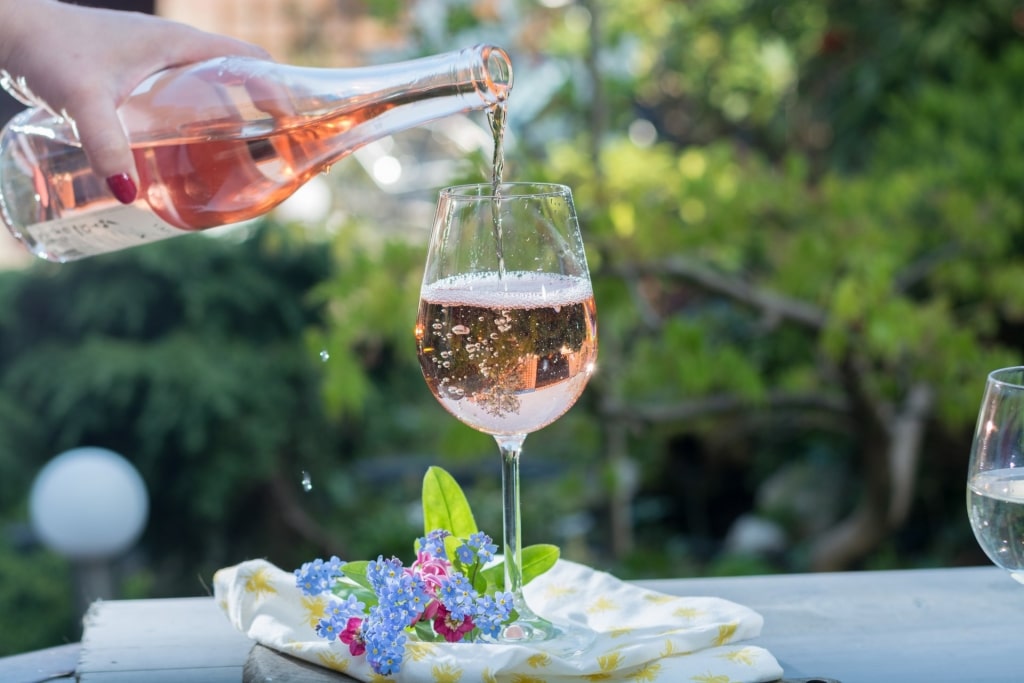
Rosé wine
Besides the abundance of sunshine and gravelly soils, Provence’s wine producers are also assisted by the famous Mistral wind. This wind of seasonal change can be a blustery nuisance to its citizens, but its dry nature is a boon in promoting healthy vines, half of which are dedicated to rosé production.
As for what a classic Provençal rosé tastes like? It’s a dry, crisp, fruit-forward glassful that’s perfect with most kinds of Provençal food, although something like a Salade Niçoise (however it comes) is a match made in heaven.
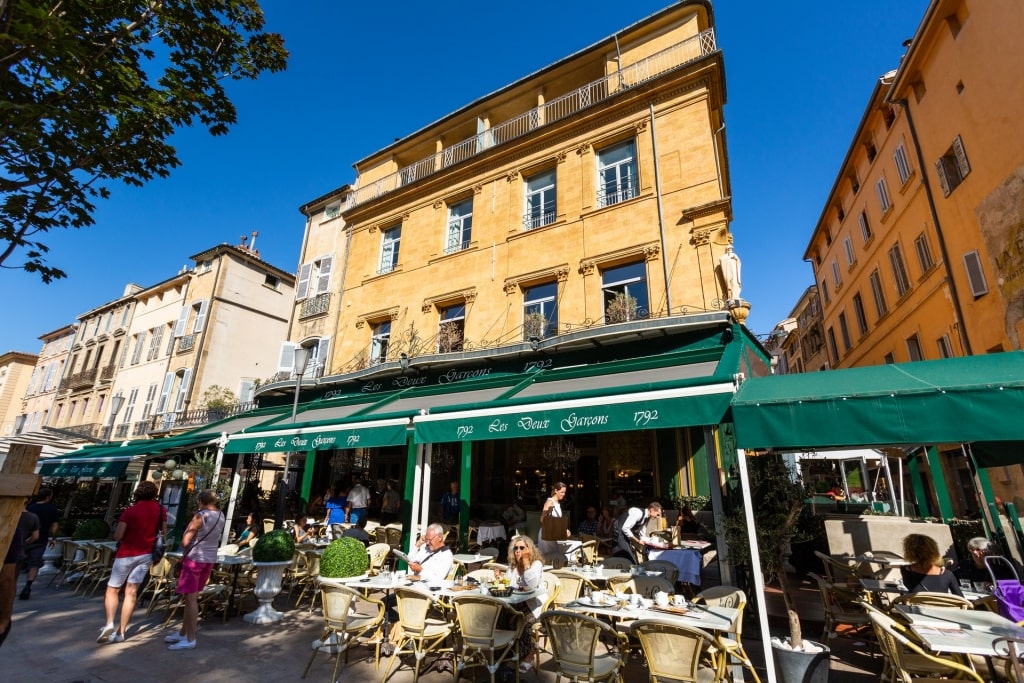
Aix-en-Provence
Experience all of these delicious Provençal dishes and more on a cruise to France. Browse our cruise itineraries online and plan a luxurious, food-filled escape.



